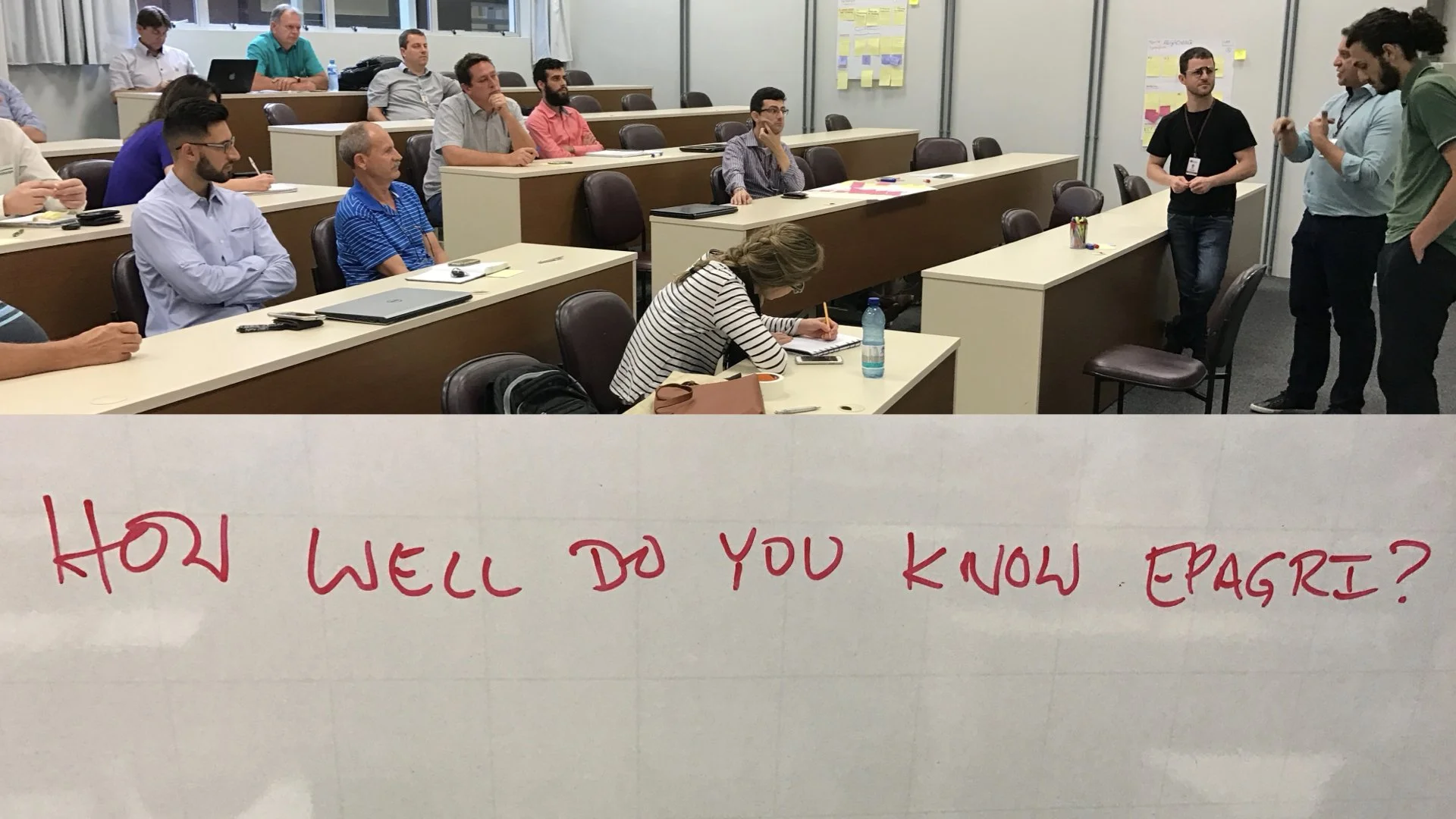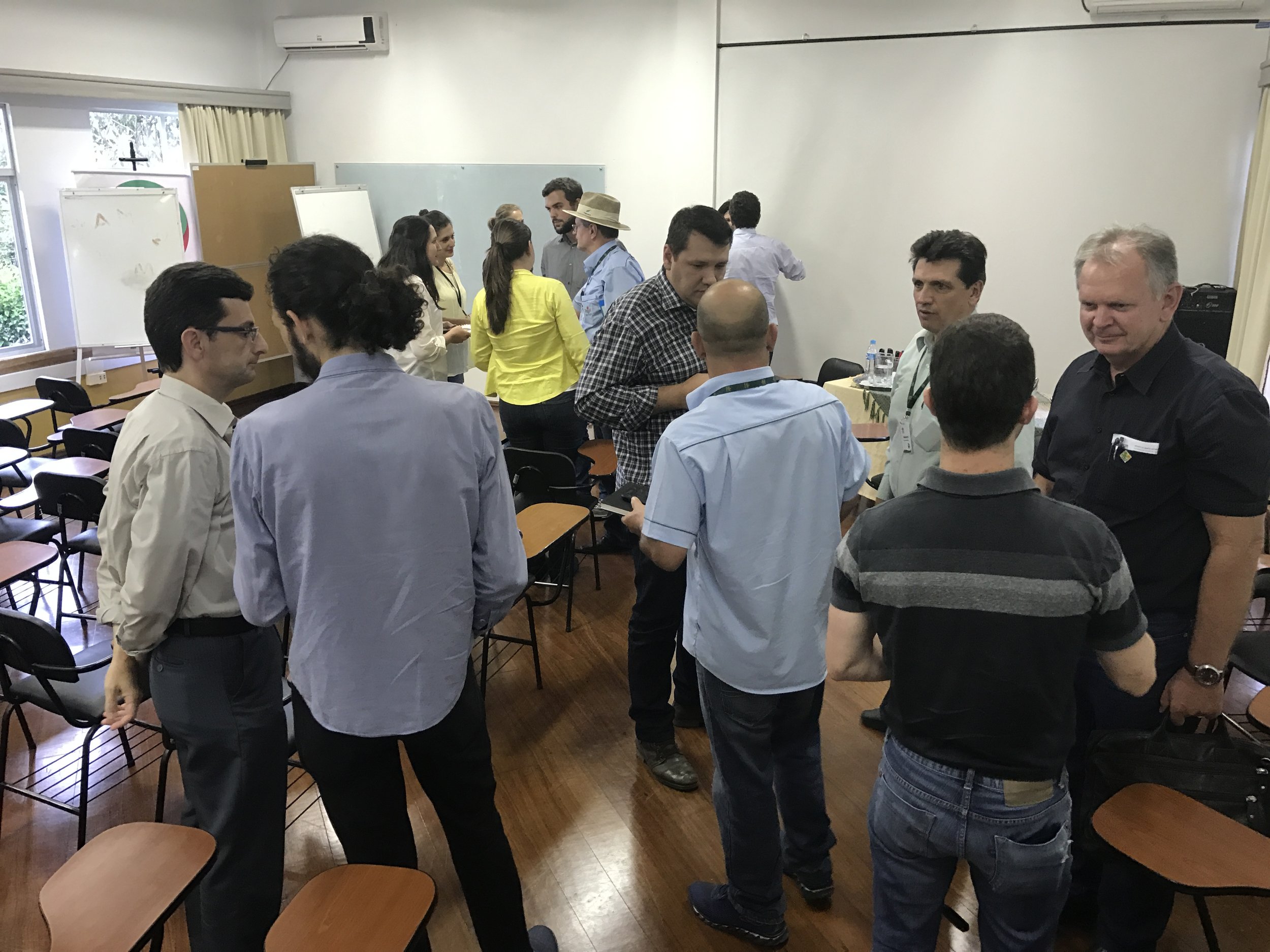The World Bank
Applying human-centered design and modern product techniques in a multilateral context to help farmers adapt to climate change
Challenge
Part of the World Bank’s mission is focused on climate change and its effect on the agriculture sector. Within this sector, farmers must reckon with the need to adapt to climate change. While a range of climate smart agriculture technologies exist to help them, small holder, i.e. small and family, farmers struggle to invest in and take advantage of these technologies given their limited scale and resources. That is only part of the story, as other risks and challenges exist present barriers to greater adoption. A more user-centered and stakeholder-centric approach to these challenges can better reveal the specifics of those challenges, present opportunities to innovate and overcome such barriers, and ultimately deliver solutions that help farmers adapt.
In this case, we applied the rigorous principles, methods, and tools of human-centered design to understand the challenges small farmers face, to ensure we had clarity on the broader contextual problems to solve. In taking this approach, we developed deep insights that led to the launch of an agriculture tech incubator that supports ag-tech entrepreneurs, whose focus is to help small farmers adapting to climate change.
Approach
We created a “learn by doing” model at The World Bank called Launchpad. The model combined traditional World Bank approaches with human-centered design methods to create a new model for delivering World Bank projects and their desired outcomes.
Traditionally, World Bank leaders and managers execute programs often by forming agreements with government ministries in what is typically a top-down model. World Bank project managers then outsource day-to-day project work to external consultants based on those agreements or policy notes. This removes the World Bank project managers from meeting directly with the people and stakeholders who live a particular challenge every day, creating distance and making it more challenging to determine whether they’re solving the right problem and creating the desired outcome. In other words, they lack firsthand insight.
With Launchpad, World Bank project managers and teams immerse themselves directly in the work and, using design methods, meet with and learn directly from the people who live the problem every day, as well as the adjacent parties and stakeholders within the ecosystem that are relevant to understanding and solving the problem.
I served as an advisor and coach through the entire process and collaboration. I taught World Bank teams the fundamentals of human-centered design, iterative development, and modern product techniques—but adapting such techniques to the context of complex, systemic development challenges. I also guided them throughout our work together from beginning to end, applying these techniques to international development and climate change challenges they faced in the Launchpad learn by doing model.
Ethnographic user and multi-stakeholder research
In this case, we met with a range of parties in Brazil from the ministry of agriculture and agriculture technical assistance organizations to entrepreneurs building new climate smart agriculture technologies and small farmers at the ground level.
We met with farmers to see firsthand the challenges they face in adapting to climate change. We met with entrepreneurs to understand their challenges in launching businesses and had them demonstrate how their solutions support small farmers.
With these and other support organizations, we had participants map out and develop a picture of the dynamics at play in the agriculture economy using ecosystem mapping exercises.
Problem framing was a critical part of our challenge as we learned from the multiple perspectives, motivations, and understood the capabilities each party brought to the ecosystem. Key questions for us were: how many problems to consider? Whose problem should we prioritize and solve for? In what sequence should we solve them?
Synthesis and workshopping the problem together
We synthesized our findings, working bottom up with individual entrepreneurs and farmers and top down from the government and ecosystem level, identifying gaps and challenges in why a healthy ecosystem to support entrepreneurs and small holder farmers does not exist.
A critical decision presented itself: should we focus on helping farmers, or helping entrepreneurs, or both? In working through the analysis and synthesis of our research insights, we aligned on supporting entrepreneurs, however, we recognized the need to convene entrepreneurs with farmers and other key stakeholders in order to surface our insights, bridge gaps in understanding each other, and co-create solutions together to ensure cross-stakeholder buy-in.
Revealing new insights and reframing the problem through direct engagement in context
Through these and other activities, we generated new and critical insights that we would not have uncovered had we not met directly with entrepreneurs and farmers directly.
In particular, an “a-ha” moment occurred during one of our workshops. Entrepreneurs consistently shared that they could not get access to meet with farmers. We had learned from research that farmers declined to meet with entrepreneurs and try new technologies because they were skeptical. Probing further, we learned farmers refused many new ag-tech solutions because of the fear and risk of crop failure if the technologies didn’t work—something that threatened their livelihoods.
However, another critical insight we learned was that farmers did have the trust of a technical assistance organization, EPAGRI, (a dynamic not uniform across geographies in Brazil, but specific to the state of Santa Catarina—something insightful as we worked with another state in Brazil, where the technical assistance organization did not have the trust of farmers). EPAGRI had a long-standing relationship supporting farmers in evolving their farming practices, including adopting new technologies, so that trusted relationship had been built over a long period of time. In subsequent workshops with other entrepreneurs in Santa Catarina, they consistently said they had never heard of this technical assistance organization, EPAGRI.
This collection of insights revealed that a key opportunity was to bring together entrepreneurs and farmers with the support of EPAGRI. If entrepreneurs could engage with farmers with the support of EPAGRI, they could learn how to work with farmers, overcoming a key hurdle in access. These ground level insights revealed previously unknown opportunities to innovate, allowed us to build mechanisms and solutions to solve for these specific challenges, and develop new business models and incentives, mitigating risk to support these partnerships.
We convened farmers, entrepreneurs, and the technical assistance organization to work through the lack of trust, build bridges to overcome gaps in understanding, and define opportunities to overcome the risks farmers faced threatening their livelihoods.
Aligning stakeholders on a multilateral initiative
Additionally, we met with a range of potential partners who could launch an initiative to support this ecosystem. Following a series of meetings during our design sprints (or missions in World Bank parlance), the core team aligned on which organizations were the closest fit in their ability to support entrepreneurs focused on helping small farmers.
We brought together government, private sector entrepreneurs, small business incubation platforms, technical assistance organizations, and extensionists, who helped translate new methods, tools, and technologies to small farmers. The objective was to build of a platform of capabilities to support the entrepreneurial ecosystem.
As we convened the organizations together, their instinct was to develop the business model first. Resisting the temptation to lead with business model, we took a more human-centered approach for the first convenings. We had the group focus on the challenges entrepreneurs face, and to find common ground in how to work together in cross-organizational teams. Over time, the business and operating model were established, pulling from the expertise and capabilities of each organization, and how they could solve for the challenges entrepreneurs face in helping small farmers.
Results
The incubator, Núcleo Inovação Tecnológica da Agricultura Familiar, or NITA, was launched to support small farmers by helping ag-tech entrepreneurs, focused on the small farmer business segment, launch and grow their businesses. The launch was sponsored by our multilateral collaborative, including the governor of the Brazilian State of Santa Catarina. NITA, as part of Acate Agriculture, now supports over 40 ag-tech companies in its portfolio and has become part of the #2 emerging tech ecosystem by VC investment in Latin America.
























